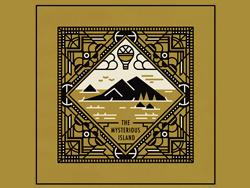Ethiopian Yegashefi Aduo Coffee with rich body Flavor Characteristics
Ethiopia is an ancient country with a history of 3000 years of civilization. The Hamite people who immigrated from the southern Arabian Peninsula were the earliest inhabitants.
Monlinique I reigned in 975 BC. The Kingdom of Nubia was established in the 8th century BC.
From the 1st century to 976 AD, the Ethiopian Empire, also known as the Kingdom of Aksum, was established in Aksum in the north. Christianity was introduced into Ethiopia in the 4th and 5th century. From the 12th century to 1270, the Zagvi dynasty was established.
In 1270, the Abyssinian Empire was established. [3]
The early invasion period of western colonialism
Portugal and the Ottoman Empire invaded one after another in the 16th century. British troops invaded Ethiopia in 1867 and Sudanese Mahdi troops invaded in 1887.
In 1889, Mennelik II became emperor, unified the country, established the capital Addis Ababa, and established the territory of modern Ethiopia. In 1890, Italy invaded, squeezed out British power and declared Ethiopia a "sanctuary". In 1896, Menlinique II led the army to defeat the Italian army in Adua and was forced to recognize Ethiopia's independence. In February 1977, Lieutenant Colonel Mengistu Hale Maryam (MENGISTU HAILE MARIAM) staged a military coup and served as chairman and head of state of the "interim military Administration Council". In 1979, the Ethiopian Labor people's Party Organizing Committee, mainly composed of soldiers, was established to implement an one-party system. In 1984, the Ethiopian Workers' Party was formed according to the Soviet Communist Party model. In September 1987, Mengistu announced the dissolution of the "interim military Administrative Council", the end of military rule, the establishment of the "people's Democratic Republic of Ethiopia" and the establishment of a new parliament, with Mengistu as president and head of government.
In March 1988, the rebel "Eritrean people's Liberation Front" (EPLF) and the "Tigre people's Liberation Front" (TPLF) launched an attack on government forces, and a large-scale civil war broke out. In 1989, the Eritrean people's Liberation Front occupied most of Eritrea. On May 28, 1991, the EGF troops, mainly the Tigre people's Liberation Front, entered Addis Ababa and the Mengistu regime collapsed.
These mountain villages are foggy, like spring all year round, with a gentle breeze in summer, cool but not hot, rain but not damp, and no cold damage in winter, giving birth to a unique regional flavor of citrus and flowers. Most of the coffee trees planted in farmers' own backyards or mixed with other crops in the fields were planted by monks in Europe and later transferred to farmers or cooperatives. Yejasuefei is actually constructed by surrounding coffee communities or cooperatives, including: Hafusha, Hama, Biloya Garshefi is a small town, 700-21000 meters above sea level, is synonymous with Ethiopian boutique coffee. It has been a wetland since ancient times. The ancient saying "Yirga" means "settle down" and "Cheffe" means "wetland". The mode of production and flavor of coffee here are so outstanding that Ethiopian coffee farmers compete to be proud of the flavor of their own coffee. To become the most famous coffee producing area in Africa, Ethiopia's Yirgacheffe coffee is delicate, delicate and sweet. As the hometown of coffee, thousands of years of planting history and processing tradition in Ethiopia have created high-quality washed Arabica beans. Light baking has unique sweet aromas of lemon, flowers and honey, soft acidity and citrus flavors, fresh and bright on the palate. No milk or sugar, let the rich texture and unique soft floral aroma brush your taste buds, leaving an endless aftertaste v Limu Coffee coffee (spicy and Winnie flavor) is famous for its aroma and wine taste, and is popular in Europe and the United States. The acidity and alcohol thickness are good, and the water-washed lim coffee is also the favorite of fine coffee. The bean shape is medium, greenish blue, mostly round.
Sidamo coffee (SidamaCoffee) has medium bean shape and green gray. Hidamo washed coffee is known as sweet coffee (sweet coffee) because of its balanced taste and flavor. it has delicate acidity and good alcohol thickness. it is produced in the south of Ethiopia and can be mixed with fine products.
YirgacheffeCoffee coffee has a strong floral flavor.
Water washing is one of the best high-estate coffee in the world, with soft acidity and rich alcohol thickness. Top and Bebeka coffee, with low acidity but high alcohol thickness, are indispensable members of the blended coffee.

Important Notice :
前街咖啡 FrontStreet Coffee has moved to new addredd:
FrontStreet Coffee Address: 315,Donghua East Road,GuangZhou
Tel:020 38364473
- Prev

Introduction to the flavor and taste characteristics of Ethiopian Sidamasha Chiso coffee with a long aftertaste
Ethiopia is rectangular, with a ratio of length to width of 3:2. From top to bottom, it is composed of green, yellow and red parallel equal horizontal rectangles, with the national emblem in the middle of the flag. Since the end of the 19th century, Ethiopia began to use the green, yellow and red cross-striped national flag. In modern history, Ethiopia is the first African country to join the forest of free nations. [8] to this century
- Next

Introduction to the floral regional flavor of Ethiopian Yega Sheffivoka coffee flavor
In December 1994, the Constitution of the Federal Democratic Republic of Ethiopia was formulated. According to the Constitution, Ethiopia will implement a federal system and a parliamentary cabinet system after the general election for a term of five years. After the national election in May 1995, the Federal Democratic Republic of Ethiopia was established on August 22, and Meles became prime minister in her capacity as chairman of the majority party of the people's House of Representatives. On May 14, 2000, Ethiopia held a national meeting
Related
- Detailed explanation of Jadeite planting Land in Panamanian Jadeite Manor introduction to the grading system of Jadeite competitive bidding, Red bid, Green bid and Rose Summer
- Story of Coffee planting in Brenka region of Costa Rica Stonehenge Manor anaerobic heavy honey treatment of flavor mouth
- What's on the barrel of Blue Mountain Coffee beans?
- Can American coffee also pull flowers? How to use hot American style to pull out a good-looking pattern?
- Can you make a cold extract with coffee beans? What is the right proportion for cold-extracted coffee formula?
- Indonesian PWN Gold Mandrine Coffee Origin Features Flavor How to Chong? Mandolin coffee is American.
- A brief introduction to the flavor characteristics of Brazilian yellow bourbon coffee beans
- What is the effect of different water quality on the flavor of cold-extracted coffee? What kind of water is best for brewing coffee?
- Why do you think of Rose Summer whenever you mention Panamanian coffee?
- Introduction to the characteristics of authentic blue mountain coffee bean producing areas? What is the CIB Coffee Authority in Jamaica?

